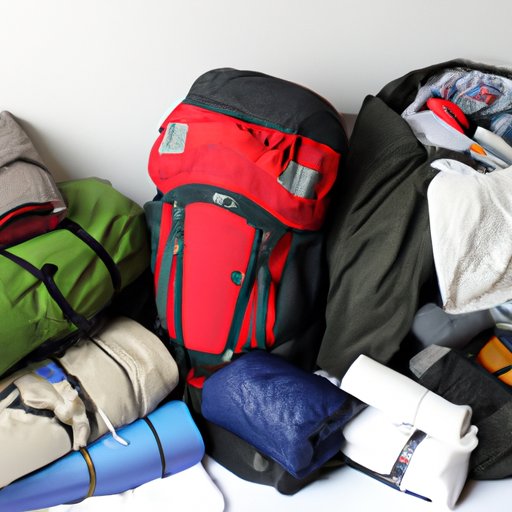Introduction
Packing a backpack for travel is a skill that requires careful planning and attention to detail. It involves researching the climate and terrain of your destination, choosing the right size and weight of backpack, organizing items into categories, packing clothing in lightweight layers, using packing cubes and compression bags, placing heavier items closer to your back, and securing breakable items and valuables. By following these tips, you can ensure that you are prepared for any situation when you set off on your journey.
Research the Climate and Terrain of Your Destination
Before you start packing, it is important to research the climate and terrain of your destination. According to a study conducted by the University of California, Davis, “Climate and terrain affect everything from the type of clothing you should bring to the type of footwear you’ll need.” By taking the time to understand the environment you will be visiting, you can better prepare for your trip and choose the right backpack for your needs.

Choose a Backpack That Is the Right Size and Weight for Your Needs
When it comes to selecting the right backpack for your journey, there are a few features to consider. The size of the backpack should be determined by the length of your trip and the amount of items you plan to carry. Additionally, the weight of the backpack should not exceed 20% of your body weight, according to the American Chiropractic Association. Look for a backpack that is made from lightweight material, has adjustable straps and provides adequate support for your back.
Organize Items Into Categories
Once you have selected the right backpack, it’s time to start organizing your items. Pack items such as clothes, toiletries, electronics and first-aid supplies into separate categories. This will make it easier to find the items you need and keep your belongings organized. Additionally, you can use waterproof or water-resistant pouches to store items such as documents and medications.
Pack Clothing in Lightweight Layers
Lightweight layers are essential when packing for travel. Not only do they take up less space in your bag, but they also provide more versatility in terms of temperature control. For example, if you are visiting a warm climate, you can wear a tank top and shorts during the day and add a light jacket in the evening. Alternatively, if you are traveling to a cold destination, you can layer sweaters, scarves and hats to stay warm.

Use Packing Cubes and Compression Bags
Packing cubes and compression bags are a great way to maximize the space in your backpack. Packing cubes allow you to organize your items into separate compartments, while compression bags reduce the volume of clothing and other items. When used together, these two items can help you fit more into your bag and keep your belongings organized.

Place Heavier Items Closer to Your Back
It is important to evenly distribute the weight of your backpack. According to a study published in the International Journal of Sports Medicine, “The best way to balance the load is to place heavier items close to your back and lighter items away from your back.” By doing this, you can ensure that you are carrying the weight of your backpack in an ergonomically correct position.
Secure Breakable Items and Valuables
When packing a backpack for travel, it is important to secure breakable items and valuables. Place fragile items such as glass bottles and electronics in padded cases or wrap them in clothing. Additionally, store valuable items such as passports and wallets in your front pocket or a secure pouch that is attached to the inside of your backpack.
Conclusion
Packing a backpack for travel can seem daunting, but with proper planning and preparation, it doesn’t have to be. Researching the climate and terrain of your destination, choosing the right size and weight of backpack, organizing items into categories, packing clothing in lightweight layers, using packing cubes and compression bags, placing heavier items closer to your back, and securing breakable items and valuables are all essential steps for ensuring that you are prepared for any situation. By following these tips, you can ensure that your journey is safe and enjoyable.
(Note: Is this article not meeting your expectations? Do you have knowledge or insights to share? Unlock new opportunities and expand your reach by joining our authors team. Click Registration to join us and share your expertise with our readers.)
